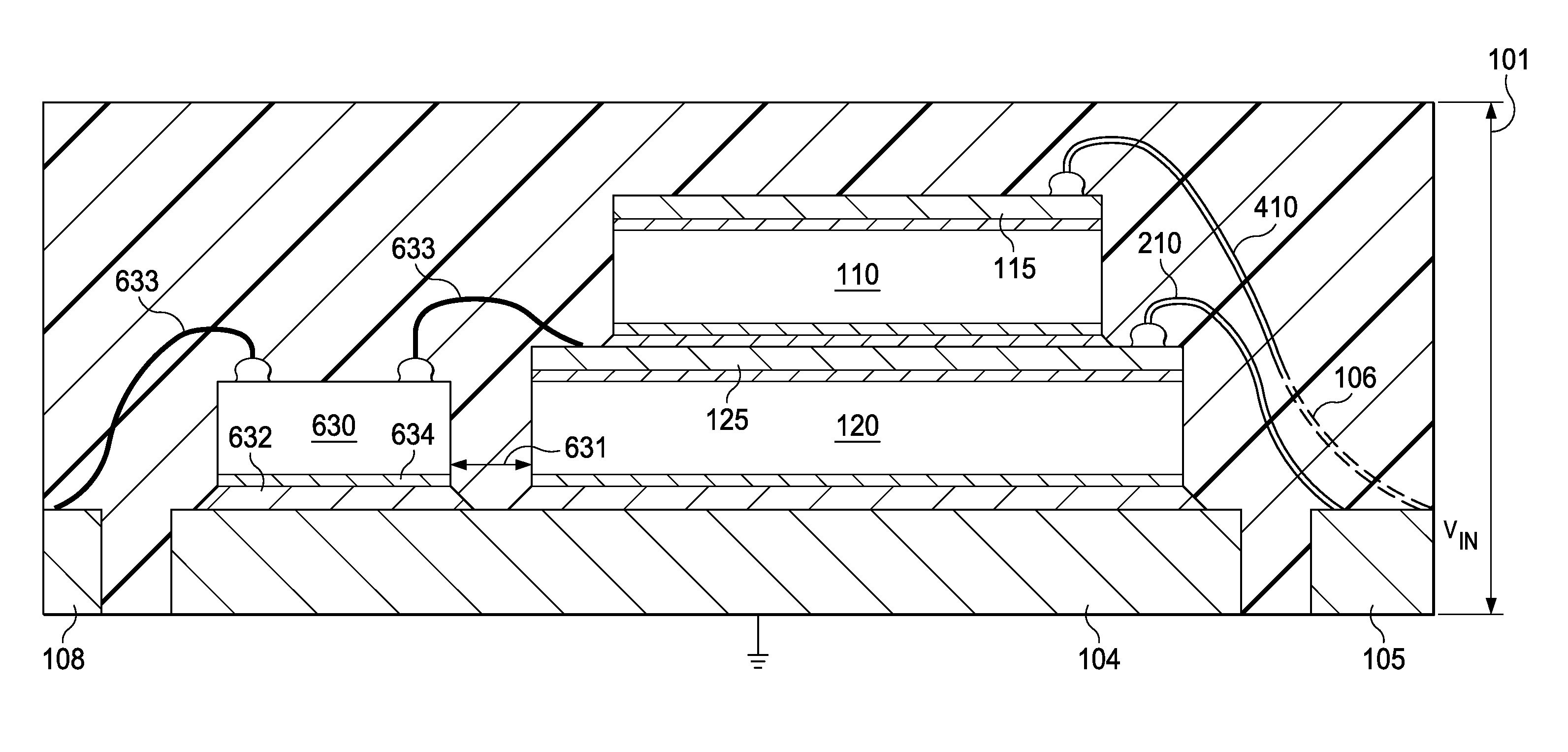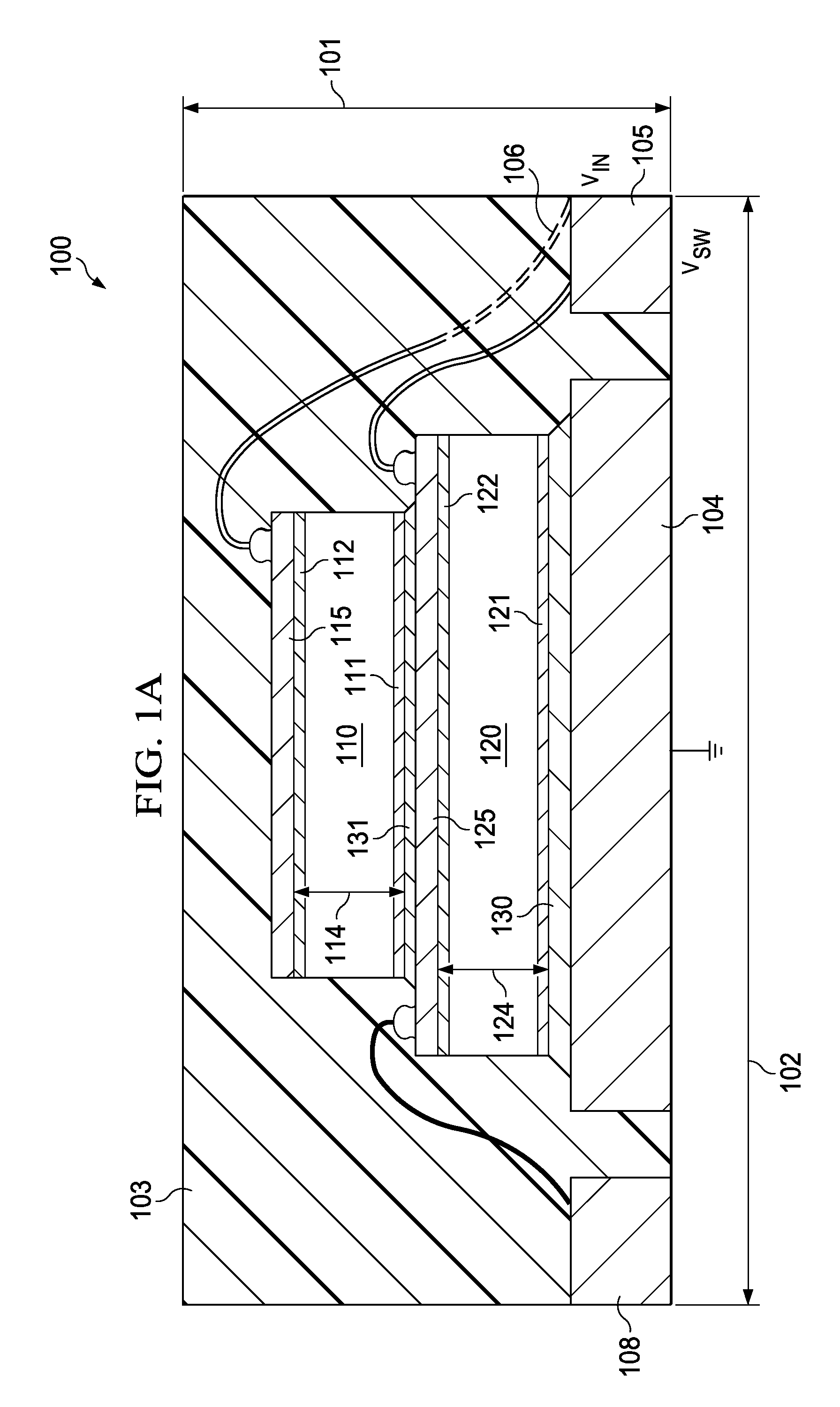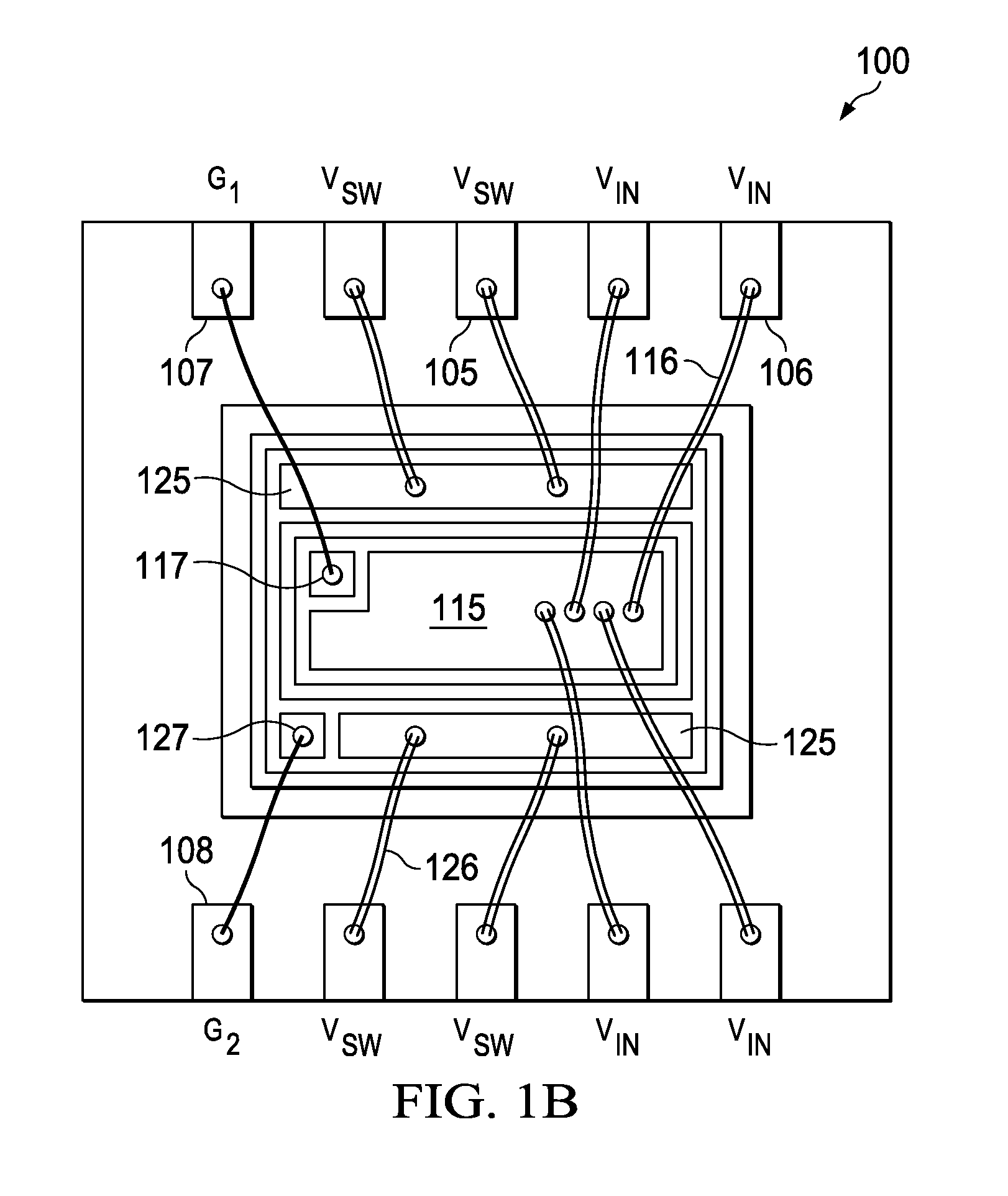Structure and method for uniform current distribution in power supply module
- Summary
- Abstract
- Description
- Claims
- Application Information
AI Technical Summary
Benefits of technology
Problems solved by technology
Method used
Image
Examples
Embodiment Construction
[0031]FIG. 1A illustrates a cross section (simplified and not to scale) of a power supply module generally designated 100 as an exemplary embodiment of the invention. The module dimensions are outlined by encapsulation material 103. A preferred material is an epoxy-based molding compound. The exemplary module of FIG. 1 has a thickness 101 between about 0.8 and 1.0 mm. Consequently, the exemplary module has, due to the lack of metal clips, a smaller thickness than conventional modules with clips (about 1.5 mm thick). It should be noted that design and process improvements under development (such as low-rise wire bonds and thinner chips) will allow a future module thickness of about 0.4 mm. The length 102 of module 100 may be 6 mm, and the width (not shown in FIG. 1A) may be 5 mm. Other modules of the configuration of FIG. 1A may range from 2 by 2 mm to 5 by 7 mm.
[0032]A metal leadframe, generally suitable for Quad Flat No-Lead (QFN) and Small Outline No-Lead (SON) type modules, inclu...
PUM
 Login to View More
Login to View More Abstract
Description
Claims
Application Information
 Login to View More
Login to View More - Generate Ideas
- Intellectual Property
- Life Sciences
- Materials
- Tech Scout
- Unparalleled Data Quality
- Higher Quality Content
- 60% Fewer Hallucinations
Browse by: Latest US Patents, China's latest patents, Technical Efficacy Thesaurus, Application Domain, Technology Topic, Popular Technical Reports.
© 2025 PatSnap. All rights reserved.Legal|Privacy policy|Modern Slavery Act Transparency Statement|Sitemap|About US| Contact US: help@patsnap.com



